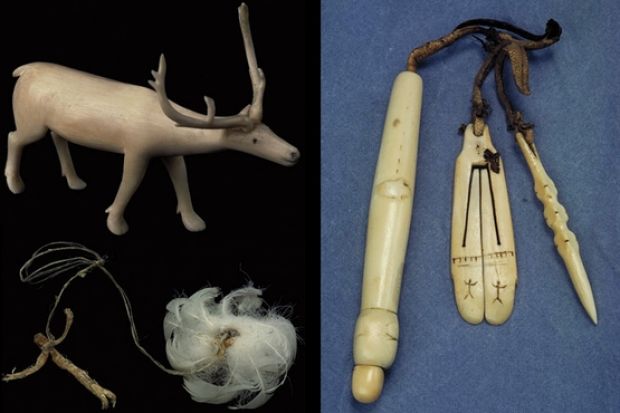The “seal indicator” (above, bottom-left), also Canadian and from the early 20th century, was placed above a breathing hole in the ice located with the help of dogs. Hunters would wait patiently for hours, ready to strike with a harpoon when they saw the feather move.
The mid-19th-century women’s sewing kit from Alaska (above, right) includes a needle case, a holder to hide thimbles and an awl.
All these items come from the University of Aberdeen’s rich collection of ethnographic material from the Arctic. They are on display at the King’s Museum on the Aberdeen campus until 7 September as part of an exhibition titled Nunalleq: The Yupiit and the Arctic World.
The exhibition also includes masks, dolls, ivory carvings and other remarkable discoveries from a prehistoric Alaskan village on the shores of the Bering Sea, where the local community asked Aberdeen archaeologists to carry out a dig to rescue artefacts threatened by erosion.
The material is owned by the village corporation of Qanirtuuq and will return to Alaska after it has been conserved, catalogued and analysed.
Send suggestions for this series on the treasures, oddities and curiosities owned by universities across the world to matthew.reisz@tsleducation.com
